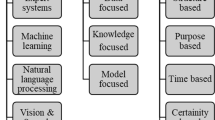Abstract
This paper details models that determine the efficient allocation of resources on a medical assessment unit (MAU) of a general hospital belonging to the National Health Service (NHS) UK. The MAU was established to improve the quality of care given to acute medical patients on admission, and also provide the organizational means of rapid assessment and investigation in order to avoid unnecessary admissions. To analyse the performance of the MAU, doctors, nurses and beds are considered as the three main resources. Then a model is developed using the goal programming approach in multiobjective decision making and solved to deal with MAU performance. The developed model is solved under three different sets of patient admissions with the same resource levels using past data from the MAU. The results of the model are used to analyse the needed resource levels. Conclusions as to the appropriate staffing levels and functions of the MAU are drawn.














Similar content being viewed by others
References
Arenas M et al (2002). Analysis via goal programming of the minimum achievable stay in surgical waiting lists. J Opl Res Soc 53: 387–396.
Blake JT and Carter MW (2002). A goal programming approach to strategic resource allocation in acute care hospitals. Eur J Opl Res 140: 541–561.
Carrol L (2004). Clinical skills for nurses in medical assessment units. Nursing Standard 18: 33–40.
Charnes A, Cooper WW and Ferguson (1955). Optimal estimation of executive compensation by linear programming. Mngt Sci 1: 138–151.
Chu SCK, Ho MPP, Lee KKY and Lo HP (2000). Nurses allocation models for maternal and child health services. J Opl Res Soc 51: 1193–1204.
Department of Health (1991). The Patient's Charter: raising the standard. HMSO, London.
Dowsland KA (1998). Nurse scheduling with tabu search and strategic oscillation. Eur J Opl Res 106: 393–407.
Esmeria GJC (2001). An application of goal programming in the allocation of Anti-TB drugs in rural health centres in the Philippines. In: Electronic Proceedings of the 12th Annual Conference of the Production and Operations Management Society, POM-2001, March 30–April 2, 2001, Orlando FL. Available online.
Flessa S (2000). Where efficiency saves lives: a linear programme for the optimal allocation of health care resources in developing countries. Health Care Mngt Sci 3: 249–267.
Flessa S (2003). Priorities and allocation of healthcare resources in developing countries: a case-study from the Mtwara region, Tanzania. Eur J Opl Res 150: 67–80.
Griffiths JD, Price-Lloyd N, Smithies M and Williams JE (2005). Modelling the requirement for supplementary nurses in an intensive care unit. J Opl Res Soc 56: 126–133.
Harper PR and Shahani AK (2002). Modelling for the planning and management of bed capacities in hospitals. J Opl Res Soc 53: 11–18.
Ignizio JP and Cavalier TM (1994). Linear Programming. Prentice-Hall, Inc.: New Jersey.
Jones DF and Tamiz M (1995). Expanding the flexibility of goal programming via preference modelling techniques. Omega Int J Mngt Sci 23: 41–48.
Jones DF and Tamiz M (2002). Goal programming in the period 1990–2000. In: Ehrgott M and Gandibleux X (Eds). Multiple Criteria Optimisation: State of the art annotated bibliographic surveys. Kluwer International Series: California.
Lane DC, Monefeldt C and Rosenhead JV (2000). Looking in the wrong place for the healthcare improvements: a system dynamics study of an accident and emergency department. J Opl Res Soc 51: 518–531.
Lovegrove J et al (1999). Monitoring the performance of cardiac surgeons. J Opl Res Soc 50: 684–689.
Manchester Triage Group (1996). Emergency Triage. BMJ Books: UK.
Martel JM and Aouni B (1990). Incorporating the Decision-makers Preferences in the Goal Programming Model. J Opl Res Soc 41: 1121–1132.
NHS Executive (1995). Revised and Expanded Patient's Charter: Implementation. NHS Executive: Leeds, UK.
Rahman SU and Smith DK (1999). Deployment of rural health facilities in a developing country. J Opl Res Soc 50: 892–902.
Rauner MS and Vissers JMH (2003). OR applied to health services: planning for the future with scarce resources. Eur J Opl Res 150: 1–2.
Rifai AK and Pecenka JO (1989). An application of goal programming in healthcare planning. Int J Prod Mngt 10: 28–37.
Romero C (1991). Handbook of Critical Issues in Goal Programming, Ist ed. Pergamon Press plc.: Oxford.
Schmidt P (1998). Workflow analysis of the Medical Assessment Unit and Description of the Acute Medical Services at Queen Alexandra Hospital. Portsmouth Hospitals NHS Trust: Portsmouth, UK.
Subbe CP, Davies RG, Williams E, Rutherford P and Gemmell L (2003). Effect of introducing the Modified Early Warning score on clinical outcomes, cardio-pulmonary arrests and intensive care utilisation in acute medical admissions. Anaesthesia 58: 775–803.
Tamiz M, Jones DF and Romero C (1998). Goal programming for decision making: an overview of the current state-of-the-art. Eur J Opl Res 111: 569–581.
Vasilakis C and Marshall AH (2005). Modelling nationwide hospital length of stay: opening the black box. J Opl Res Soc 56: 862–869.
Author information
Authors and Affiliations
Corresponding author
Rights and permissions
About this article
Cite this article
Oddoye, J., Yaghoobi, M., Tamiz, M. et al. A multi-objective model to determine efficient resource levels in a medical assessment unit. J Oper Res Soc 58, 1563–1573 (2007). https://doi.org/10.1057/palgrave.jors.2602315
Received:
Accepted:
Published:
Issue Date:
DOI: https://doi.org/10.1057/palgrave.jors.2602315




